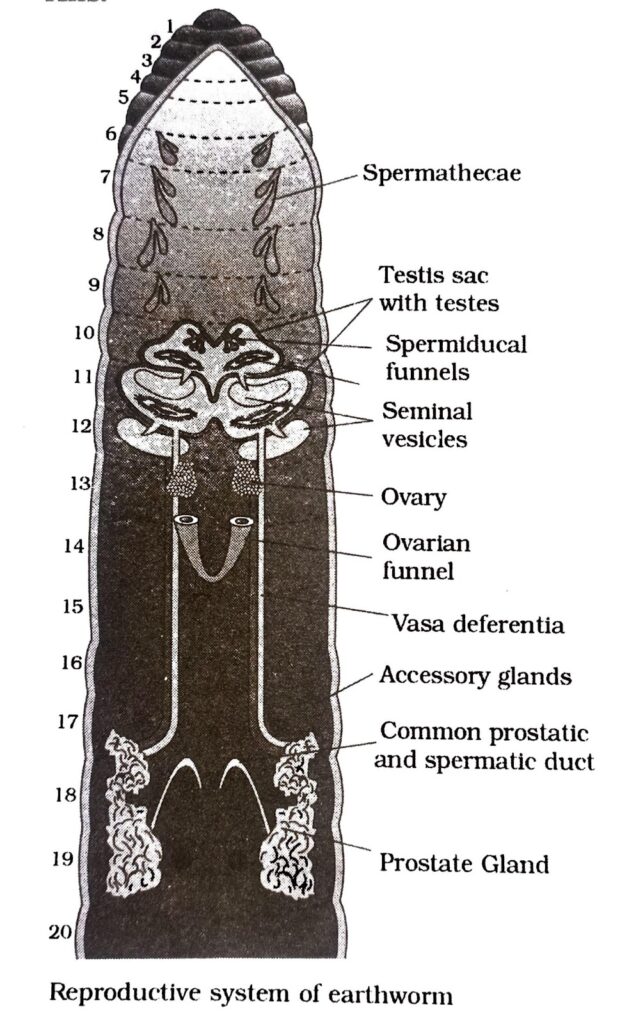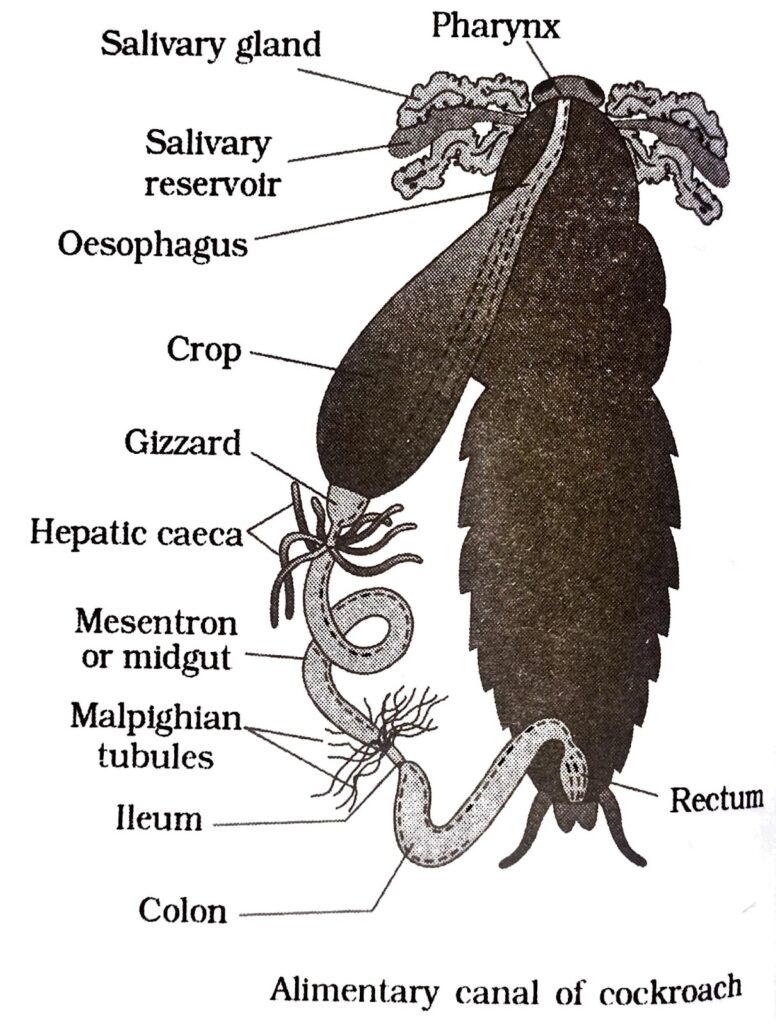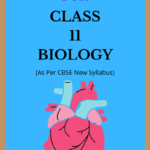NCERT Class 11 Biology Chapter 7 Structural Organisation in Animals Solutions to each chapter is provided in the list so that you can easily browse through different chapters NCERT Class 11 Biology Chapter 7 Structural Organisation in Animals and select need one. NCERT Class 11 Biology Chapter 7 Structural Organisation in Animals Question Answers Download PDF. NCERT Biology Class 11 Solutions.
NCERT Class 11 Biology Chapter 7 Structural Organisation in Animals
Also, you can read the NCERT book online in these sections Solutions by Expert Teachers as per Central Board of Secondary Education (CBSE) Book guidelines. CBSE Class 11 Biology Solutions are part of All Subject Solutions. Here we have given NCERT Class 11 Biology Chapter 7 Structural Organisation in Animals Notes, NCERT Class 11 Biology Textbook for All Chapters, You can practice these here.
Structural Organisation in Animals
Chapter: 7
BIOLOGY
TEXTUAL QUESTIONS ANSWERS
Q.1. Answer in one word or one line.
(i) Give the common name of Periplaneta Americana.
Ans. The common name of Periplaneta Americana is the American cockroach.
(ii) How many spermathecae are found in earthworm?
Ans. Four pairs of spermathecae are present in earthworms.
(iii) What is the position of ovaries in the cockroach?
Ans. In a cockroach, the pair of ovaries is located between 12th and 13th abdominal segments.
(iv) How many segments are present in the abdomen of cockroach?
Ans. Abdomen of a cockroach consists of ten segments.
(v) Where do you find malphigian tubules?
Ans. Malphigian tubules are main excretory organs of cockroaches. They form a part of the alimentary canal.
Q.2. Draw a labelled diagram of the reproductive organs of an earthworm.
Ans.

Q.3. Answer the following:
(i) What is the function of nephridia?
Ans. Nephridia are segmentally arranged excretory organs present in earthworms.
(ii) How many types of nephridia are found in earthworm based on their location?
Ans. Three types of nephridia are found in earthworms — Septal nephridia, Integumentary Nephridia, Pharyngeal nephridia.
Q.4. Draw a labelled diagram of alimentary canal of a cockroach.
Ans.

Q.5. Distinguish between the following:
(a) Prostomium and Peristomium.
Ans. Peristomium is the first segment of the body. It encloses a crescentic shaped mouth on its anterior end. Mouth is overhung by a sensory fleshy lobe called prostomium.
(b) Septal nephridium and pharyngeal nephridium.
Ans. Septal nephridium Each septum behind the 15th segment has septal nephridia attached to its anterior and posterior surfaces. [100 in each segment].
Septal nephridia discharge their excretory matter into the lumen of the alimentary canal / enteron, they are called enteronephric nephridia.
Largest in size.
Pharyngeal nephridia-
They occur in three pairs of bunches in the 4th, 5th and 6th segments lying on each side of the alimentary canal in these segments.
Pharyngeal nephridia discharge their excretory matter in the alimentary canal [buccal cavity and pharynx], they are called enteronephric nephridia.
Q.6. What are the cellular components of blood?
Ans. Cellular components of blood are erythrocytes (RBCs), leucocytes (WBCs), and thrombocytes.
Q.7. What are the following and where do you find them in animal body
(a) Chondrocytes.
Ans. Chondrocytes: Cartilage is a soft skeletal tissue made of cartilage cells called chondroblasts & chondrocytes and matrix of chondrin.
(b) Axons.
Ans. Axons: They are long, slender projections of neurons that help in carrying nerve impulses from the neuron body. Axons aggregate in bundles which make up the nerves.
(c) Ciliated epithelium.
Ans. Ciliated epithelium
Simple Ciliated Epithelium-
(i) Cells have hair like cilia.
(ii) Ciliary movement keeps the flow of mucus or particles constantly in one direction.
(iii) Ciliated Columnar Epithelium respiratory tract and Fallopian tubes (oviducts).
(iv) Ciliated Cuboidal Epithelium nephrons of kidney.
Q.8. Describe various types of epithelial tissues with the help of labelled diagrams.
Ans. Type of Epithelia – Simple (one cell thick) and Compound (more than one cell thick)
Simple Epithelia (Unilayered Epithelia)-
(i) The cells are arranged in a single layer, forming one cell thick epithelium.
(ii) Simple epithelia are classified as follows-
1. Simple Squamous Epithelium-
(a) It is composed of large flat cell with edges fit closely together.
2. Simple Cuboidal Epithelium-
(a) The cells are cubical.
(b) The cells of cuboidal epithelium often form microvilli on their free surface.
3. Simple Columnar Epithelium-
(a) Cells are elongated and placed side by side like a column.
4. Simple Ciliated Epithelium-
(a) Cells have hair like cilia.
Compound Epithelia (Multilayered Epithelia) —
(a) They are made of more than one layer of cells.
(b) They are of two types
5. Stratified Squamous Epithelium-
(a) The cell in the deepest layer is columnar with oval nuclei.
(b) The superficial layers are called squamous layers.
(c) It is of two types
(d) Keratinized Stratified Squamous Epithelium
(e) Nonkeratinized Stratified Squamous Epithelium
6. Transitional Epithelium-
(a) This consists of 4 to 6 layers of cells. The cells of deepest layer are columnar or cuboidal. The cells of middle layer are polyhedral. The cells of the surface layer are globular/ umbrella shaped.
Q.9. Distinguish between:
(a) Simple epithelium and compound epithelium.
Ans. Simple epithelium:
1. It is composed of only one layer of cells.
2. It’s function is absorption and secretion.
3. It is present in the lining of the stomach, intestine.
Compound epithelium:
1. It is composed of two or more layers of cells.
2. It gives protection against mechanical and chemical stress.
3. It is present in the lining of the pharynx and buccal cavity.
(b) Cardiac muscle and striated muscle.
Ans. Cardiac muscles:
1. They are involuntary in function.
2. They are multinucleate and branched.
3. They are found only in the heart.
Striated muscles:
1. They are voluntary in function.
2. They are multinucleate and unbranched.
3. They are found only in triceps, biceps and limbs.
(c) Dense regular and dense irregular connective tissues.
Ans. Dense Regular Connective Tissue-
(i) The collagen fibres are present in rows between many parallel bundles of fibres.
(i) It is of two types – Tendon and Ligament.
Dense Irregular Connective Tissues-
(i) It has fibroblasts and collagen fibres that are oriented differently.
(ii) This tissue is present in the skin.
(d) Adipose and blood tissue.
Ans. Adipose tissue Blood tissue-
1. It is loose connective tissue made of adipocytes.
2. It stores fats.
Blood tissue-
1. It is vascular connective tissue composed of RBCs, WBCs, platelets, and plasma.
2. It’s function is transportation of food, gases, and hormones.
(e) Simple gland and compound gland.
Ans. Simple glands-
1. They have isolated glandular cells.
2. They are unicellular.
3. Example: goblet cells of alimentary canal.
Compound glands-
1. They contain a cluster of secretory cells.
2. They are multicellular.
3. Example: salivary glands.
Q.10. Mark the odd one in each series:
(a) Areolar tissue; blood; neuron; tendon.
Ans. Neuron.
(b) RBC; WBC; platelets; cartilage.
Ans. Cartilage.
(c) Exocrine; endocrine; salivary gland; ligament.
Ans. Ligament.
(d) Maxilla; mandible; labrium; antenanae.
Ans. Antennae.
(e) Protonema; mesothorax; metathorax; coxa.
Ans. Protonema.
Q.11. Match the terms in column I with those in column II:
| Column I | Column II |
| (a) Compound epithelium | (i) Alimentary canal |
| (b) Compound eye | (ii) Cockroach |
| (c) Septal Nephridia | (iii) Skin |
| (d) Open circulatory system | (iv) Mosaic vision |
| (e) Typhlosole | (v) Earthworm |
| (f) Osteocytes | (vi) Phallomere |
| (g) Genitalia | (vii) Bone |
Ans.
| Column I | Column II |
| (a) Compound epithelium | (iii) Skin |
| (b) Compound eye | (iv) Mosaic vision |
| (c) Septal Nephridia | (v) Earthworm |
| (d) Open circulatory system | (ii) Cockroach |
| (e) Typhlosole | (i) Alimentary canal |
| (f) Osteocytes | (vii) Bone |
| (g) Genitalia | (vi) Phallomere |
Q.12. Mention briefly about the circulatory system of earthworm.
Ans. Circulatory system of earthworm:
(a) Blood vascular system of earthworm is closed type blood flows in the closed blood vessels.
(b) The haemoglobin is present in plasma. Due to haemoglobin, the color of plasma is red.
(c) Only one type of blood corpuscles – leucocytes are present in the blood of earthworm. The leucocytes kill the harmful germs which may enter the body of earthworm.
(d) Heart — Four pairs of tubular hearts with valves.
(e) Blood Vessels-
(f) Dorsal blood vessels-
(i) It extends from one end of the body to the other.
(ii) The blood flow in this vessel from behind to forward on the dorsal side of alimentary canal.
(g) The dorsal blood vessel has valves which prevent the backward flow of blood.
(h) Ventral blood vessel-
(i) It extends from one end of the body to the other.
(ii) The blood flow is from the anterior to the posterior end of the body.
(iii) It does not have any valve.
Q.13. Draw a neat diagram of digestive system of frog.
Ans. 13:
Q.14. Mention the function of the following
(a) Ureters in frog.
Ans. Ureters in frogs carries sperms and urine in male frogs.
(b) Malpighian tubules.
Ans. Malpighian tubules are excretory organs in cockroaches.
(c) Body wall in earthworm.
Ans. Body wall in earthworms consists of muscle layers.It helps in movement and burrowing.

Hi! my Name is Parimal Roy. I have completed my Bachelor’s degree in Philosophy (B.A.) from Silapathar General College. Currently, I am working as an HR Manager at Dev Library. It is a website that provides study materials for students from Class 3 to 12, including SCERT and NCERT notes. It also offers resources for BA, B.Com, B.Sc, and Computer Science, along with postgraduate notes. Besides study materials, the website has novels, eBooks, health and finance articles, biographies, quotes, and more.


